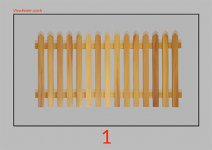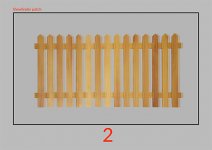alexanderspencer
Member
I need to get clear on rangefinder vertical and horizontal adjustment (get clear, get it? Moving on...)
I recently acquired a second M6 TTL with a 0.85 viewfinder. My primary M6 TTL has a 0.72 viewfinder.
When focusing with the 0.85, I noticed how crisply sharp the rangefinder alignment is in the viewfinder. Vertical and horizontal lines match up beautifully. After comparing with my 0.72, I noticed that the same cannot be said for it. Vertical lines are crisp, yet the moving image arrives just a hair above the static image.
Briefly, this brings me onto another issue -- I do not understand how to diagnose a vertical misalignment versus a horizontal misalignment.* My guess is that either:
a) vertical misalignment refers to misalignment of the static and moving images in the up-down direction (illustrated in image 1 - this is what I see), or
b) vertical misalignment refers to misalignment of vertical lines in the static and moving image (illustrated in image 2)
*This is not totally cleared up in the many posts I have read and, as I am not an expert, I need some clarification. 😕
The misalignment is present from close focus all the way to infinity, and the misalignment factor/size is pretty much the same throughout this range. I have tried angling my eyes at different points to the viewfinder to correct the misalignment, however my eyeball ends up being impractically at the bottom of the viewfinder to correct it. This is not the case with the 0.85 -- it's natural and easy.
I would like to fix this issue in the 0.72 as I noticed that the 0.85 is easier to focus due to the crisp alignment. Nothing to do with the magnification (my eyesight is, for now, touch wood, tip top). When I'm taking portraits or trying to capture fine texture detail with the 0.72, I find myself second-guessing my focus, however this is not the case with the 0.85. I'm immediately faster and more precise with it, therefore more confident when shooting. 🙂
The misalignment is consistent across 5 different pin-sharp lenses, x3 leica, x1 canon, x1 zeiss.
THANK YOU.
I recently acquired a second M6 TTL with a 0.85 viewfinder. My primary M6 TTL has a 0.72 viewfinder.
When focusing with the 0.85, I noticed how crisply sharp the rangefinder alignment is in the viewfinder. Vertical and horizontal lines match up beautifully. After comparing with my 0.72, I noticed that the same cannot be said for it. Vertical lines are crisp, yet the moving image arrives just a hair above the static image.
Briefly, this brings me onto another issue -- I do not understand how to diagnose a vertical misalignment versus a horizontal misalignment.* My guess is that either:
a) vertical misalignment refers to misalignment of the static and moving images in the up-down direction (illustrated in image 1 - this is what I see), or
b) vertical misalignment refers to misalignment of vertical lines in the static and moving image (illustrated in image 2)
*This is not totally cleared up in the many posts I have read and, as I am not an expert, I need some clarification. 😕
The misalignment is present from close focus all the way to infinity, and the misalignment factor/size is pretty much the same throughout this range. I have tried angling my eyes at different points to the viewfinder to correct the misalignment, however my eyeball ends up being impractically at the bottom of the viewfinder to correct it. This is not the case with the 0.85 -- it's natural and easy.
I would like to fix this issue in the 0.72 as I noticed that the 0.85 is easier to focus due to the crisp alignment. Nothing to do with the magnification (my eyesight is, for now, touch wood, tip top). When I'm taking portraits or trying to capture fine texture detail with the 0.72, I find myself second-guessing my focus, however this is not the case with the 0.85. I'm immediately faster and more precise with it, therefore more confident when shooting. 🙂
The misalignment is consistent across 5 different pin-sharp lenses, x3 leica, x1 canon, x1 zeiss.
THANK YOU.



